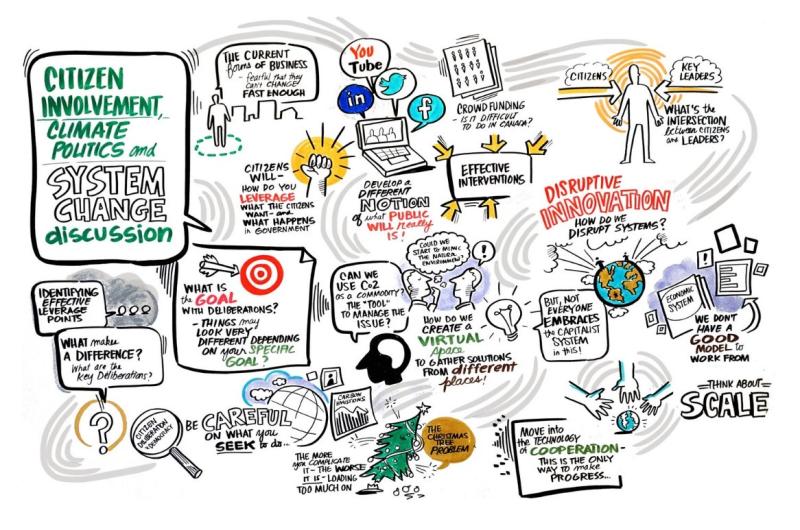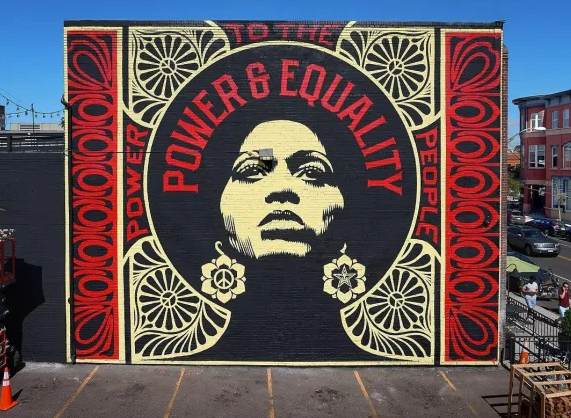Public Participation: The Processes of Citizen Engagement for the Public Good
By: Sam Wallace, Josef Korbel School of International Studies

What is Public Participation?
In the world of policy making and planning, there seems to be a growing conversation on the role of public participation in developing smarter and more effective policies. More public participation has been lauded as a potential solution to address a variety of governance issues, from allocation of environmental resources like water to issues around increasing housing prices and gentrification. The logic is that by creating more opportunity for people to participate in and contribute to decision making, we as a society will develop solutions that more actively reflect the interests and needs of those affected. However, public participation is used so broadly that it is sometimes hard to decipher what someone means when they discuss it.

Ladder of Citizen Participation (Arnstein, 1969)
How is “public participation” actually implemented and what are the current limitations of this tool in governance? When someone hears public participation, they may think of a public city council meeting or an online survey used by governments to gather opinions from their constituents. Do these all count as a method of engaging the public?
Because public participation encompasses a variety of methods and techniques, models have been created to reflect the different types. A popular model used to categorize methods of public participation is the ladder of participation (as seen to the top left), developed by Sherry Arnstein in 1969. This ladder identifies different types of participation from manipulation (decision makers attempting to mislead their constituents) to citizen control (complete decision-making authority given to constituents). However, even in this model there is room for further classification and division. Another well-known model includes the International Association of Public Participation’s Spectrum of Public Participation.
Yet, while these models reflect a classification system for how to identify whether your local community meeting is an “informing” or “partnership” form of public participation, they do not quite capture the dynamic nature of public participation. It is most helpful to not think of public participation as a single event but as a process, and with any process, the system is dynamic and changing. A well-managed public participation process includes ways to better facilitate processes of group social learning as well as clearly defining values such as representativeness and inclusion.
Public Participation as a Process of Social Learning
Public policy decision making and planning often deals with complex issues and difficult tradeoffs. These issues involve an interplay among science, technical limitations, financial considerations, and issues of social justice. Through a public participation process that allows two-way communication between the public and decision-makers, there can be an opportunity for group social learning.
An example of this phenomenon is the Alberta Climate Dialogues, a 6-year effort to build community dialogues and increase participation related to decisions about climate change in Alberta, notably a province of Canada with high economic reliance on oil extraction. While far from perfect in its outcome, the researchers and practitioners found that as dialogues continued, the citizens involved, even those with diverging perspectives, developed a more nuanced understanding of climate issues. Eventually, for a specific sub-project focused on climate change and the city of Edmonton, a group of 56 citizens made a recommendation to the City Council of Edmonton who adopted an energy transition strategy in 2015.

Infographic from the Alberta Climate Dialogues
Public Participation: Representativeness and Inclusion
For people who criticize public participation methods – or at least how they are practiced currently –, they often cite the cooption of public input by special interests and those with substantial resources. One can easily imagine that in an open public commenting period for legislation that those with the ability and means to participate are the ones who tend to do so. Thus, efforts of public participation and community engagement can easily be lopsided in which the more powerful party gets to define the problem and drive the agenda. This can lead to unequitable policy that favors one perspective more so than another.
A second objection is often that most efforts to include public perspective are meaningless or insignificant. How can a citizen know when they fill out a survey online that their opinion is being considered in a legitimate manner? What about a person who receives two minutes to explain their position before a city council board? Time limits or unclear expectations of how one’s perspective will actually factor in decision-making leaves many believing that public participation is ineffectual and unworthy of their time.
The last big question when designing a public participation process is who is in the room and participating? Are those involved in a public participation process reflective of the community that the policy or project affects? Making sure meetings are accessible in language, location, and time is not only important but essential. However, it does not end there. A good facilitator will need to be mindful of power dynamics and facilitate in a way that allows different ways of communicating and understanding to be heard and valued.
Conclusion
Public participation is a wishy-washy subject that is not often enough broken down into different components and meanings. Methods of public participation are dynamic and context-specific. A good public participation process will include opportunities for deliberation and dialogue that facilitates a process of group social learning. To determine whether more public participation is an appropriate method for crafting and creating public policy, we must first start to address some of the issues with current methods of public participation. We must look at who has access to current public participation processes, what is considered meaningful involvement, and who should be involved and at what level.
Sam Wallace is a first-year graduate student in Conflict Resolution at the Josef Korbel School of International Studies, and he is a 2018-2019 Community-Engaged Fellow in Urban Sustainability, Conservation, and Ecology. His academic interests include participatory and collaborative forms of governance – essentially, how can we understand and design the processes for decision-making to be more effective and inclusive to those affected by the outcome. He is particularly interested in applying this knowledge to issues surrounding environment and natural resources. Before coming to DU, Sam spent two years working for a non-profit that worked on water resource issues in southeastern Colorado. Outside of DU, Sam likes to play music on the piano and saxophone and explore the river systems of Colorado. To contact him or learn more, please visit his upcoming portfolio here.


